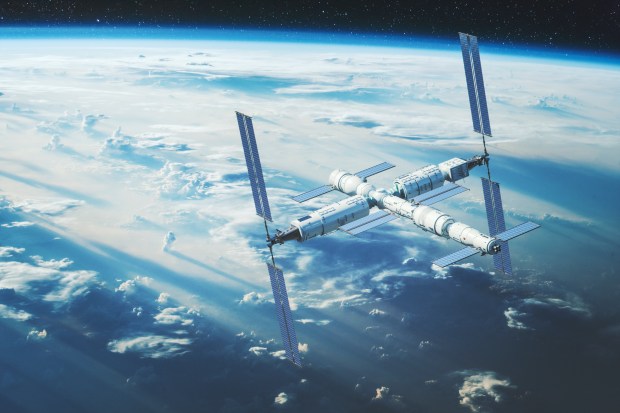
The space station Tiangong has been constructed over the course of multiple launches. It consists of a central core module named Tianhe and two lab modules named Wentian and Mengtian. In this rendering, a Tianzhou cargo craft is docked in the foreground, with a Shenzhou crew capsule docked in the background.
Credit: gremlin/E+ collection/Getty Images.
When China’s first lunar lander, Chang’e 3, touched down in Mare Imbrium on the Moon in 2013, it was the pinnacle of the country’s space endeavors. The robotic lander and its small Yutu rover companion were the first spacecraft to operate on the Moon since the 1970s, and provided new insights into our planet’s natural satellite.
But for China, the Moon landing was just one piece of a broader effort to lay the groundwork for much bigger things. In fact, China carried out 14 successful launches that year (plus one failure). Most of these were technology tests or reconnaissance and Earth observation satellites, as China looked to establish basic space infrastructure.
Since then, China’s space activities have exploded in range, frequency, and ambition. The country now rivals the U.S. for the most launches per year, with around 80 missions having been planned for 2023. The nation has its own modular space station, named Tiangong, which is expected to be continuously occupied by a rotating crew of three astronauts for at least a decade.
China also has launched a full constellation of satellites for its own version of GPS, known as BeiDou, which provides civilian location, navigation, and messaging services, as well as encrypted signals for use by the People’s Liberation Army. In an effort to keep pace with the U.S., the country is fostering a commercial space sector to bring competition and innovation to launch vehicles, remote sensing, and even asteroid mining. And it aims to build its own, 13,000-satellite-strong answer to SpaceX’s Starlink internet-providing satellite megaconstellation.
But China has also been working hard in solar-system exploration, space science, and even planetary defense. It has already registered ome major feats, which have provided big boosts to the scientific community. It is now building on these accomplishments with a series of major missions across the next decade.
Over the Moon
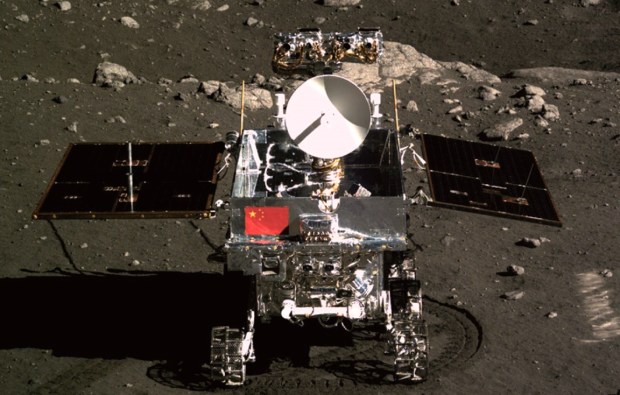
Credit: Institute of High Energy Physics, Chinese Academy of Sciences/Wikimedia Commons/CC BY 4.0
Chang’e 4, launched in late 2018, provided the country with a true spaceflight first: an unprecedented landing on the Moon’s farside.
Chang’e 5 marked yet another leap, collecting fresh samples from Oceanus Procellarum and delivering them to Earth for analysis after a complex and daring three-week mission. Chang’e 5’s samples were carried from the Moon by an ascent vehicle, which rendezvoused and docked with a return craft in lunar orbit — a process similar to how NASA’s Apollo astronauts landed on the Moon and made it back to Earth. The prize was 3.82 pounds (1,731 grams) of precious lunar material, which has yielded new insights into the volcanic history of the Moon and the unexpectedly high water content of its regolith.
“The successful launch of the Chang’e 5 mission has inaugurated a new epoch in lunar science for Chinese scientists,” says Yi Xu, an associate professor at the Space Science Institute at Macau University of Science and Technology. Chinese researchers “can now delve into the dating, mineralogy, chemical composition, microscopic features, and more, of lunar samples.”
Another major milestone, one previously achieved only by NASA, was the May 2021 landing of the Zhurong rover on the martian surface as part of the Tianwen 1 mission, which also featured an orbiter. Zhurong successfully completed 347 martian days of exploration before going into hibernation in May 2022. Although the rover never woke up, it exceeded its 90-day intended lifespan several times over.
Zhurong has greatly encouraged researchers in the field of martian science and wider planetary sciences in China, according to Xu. One of its major discoveries is that water may have existed on the surface of its landing site in the recent past — evidence that could not have been detected by remote sensing from orbit.
These missions are not just technology demonstrations. The scientific data they have returned are also providing new opportunities and helping to build interest and expertise. “They’re developing a community, and the community is really excited,” says James Head III, a planetary scientist at Brown University in Providence, Rhode Island. “The China National Space Administration is also doing a really good job and building the community towards engineering interactions that are only going to strengthen the program further.”
Aiming higher
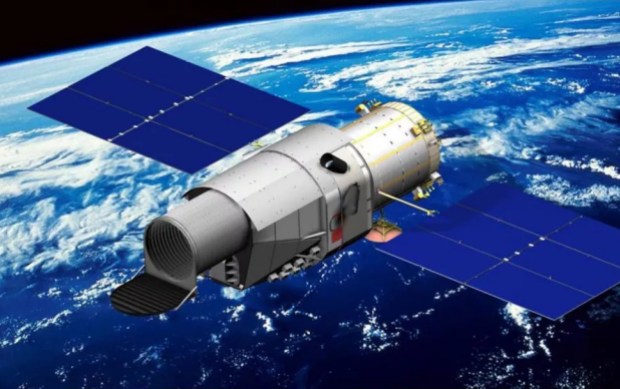
Credit: CNSA
These flights also served as a test run for more complex missions — including two of the most challenging endeavors for any major space power.
First, China aims to put astronauts on the Moon before the end of this decade. The nation’s human spaceflight agency formally announced this goal on May 29, 2023, just one day before it inaugurated its Tiangong space station with the launch of its first crew.
It is a timeline that China has a good chance of achieving, based on its progress in rocketry, crewed spaceflight, and robotic lunar missions. The country’s main space contractor, China Aerospace Science and Technology Corporation (or CASC), is developing a new rocket, the Long March 10, capable of putting 27 tons into lunar orbit. A pair of these rockets will send a crewed spacecraft (which has already flown in a high-orbit test) and a lander stack to the Moon; these will rendezvous in lunar orbit. A lunar lander, a rover (possibly commercially developed), and a lunar space suit are all in the works.
The landing wouldn’t be a mere flags-and-footprints mission, but fit into a wider plan known as the International Lunar Research Station. For this, China envisions constructing a permanent, initially robotic base on the Moon using five launches of a super-heavy-lift rocket named Long March 9. Later, crews will be sent to inhabit the lunar outpost. The country is currently seeking international partners for the megaproject, which will happen alongside NASA’s Artemis program to return astronauts to the Moon. Depending on funding, technical hurdles, and other variables, this could develop into a geopolitically tense race to see who gets boots back on the Moon first.
The other related project is the current holy grail of Mars science: a Mars sample-return mission. Bringing pieces of the Red Planet back to Earth for analysis in laboratories will reveal much more about the planet’s history — and potential ancient life — than can be gleaned from robotic rovers. The Tianwen 3 mission will be
China’s effort to collect and retrieve martian samples, currently scheduled to lift off around 2030 with the help of two Long March 5 rockets.
Collecting samples from Mars will be more challenging than from the Moon. The much greater distance and time delay require greater automation, and adjustments will need to be made for Mars’ gravity. Launching a two-stage rocket from inside the martian atmosphere is a different proposition than a single-stage launch from the airless Moon. But if China meets these challenges, it could beat NASA’s efforts. NASA has a head start — its Perseverance rover has already cached dozens of samples and left them on the ground. However, the mission to retrieve them is facing budgetary headwinds.
On the science side, the plans and objectives are beginning to take shape. Head attended a conference in Hefei, Anhui province, in 2023, held as part of China’s annual national space day — April 24, the anniversary of the country’s first orbital launch in 1970. The Tianwen 3 sessions drilled down into the engineering constraints and geological criteria for landing, he says. According to Head, researchers have compiled a preliminary list of 86 sites with potential astrobiological and geological value. The meeting also discussed the main science objectives — including searching for signs of life — and issues such as handling the samples once on Earth.
Technologically, the mission builds on accomplishments demonstrated by Chang’e 5: robotic sampling, deep-space rendezvous and docking, and launching a return vehicle from the surface of another world. Tianwen 1 also provides valuable reference information for the future martian sample-return mission; the Zhurong rover tested China’s ability to perform entry, descent, and landing onto the martian surface.
Worlds beyond Mars
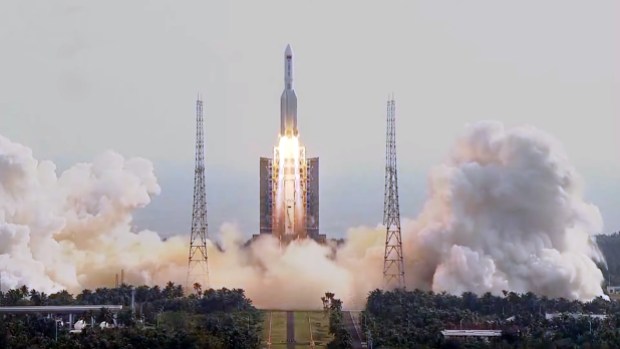
Credit: China News Service
China will also lean on its sample-return prowess in the much nearer future for two intriguing missions. China plans to launch the Queqiao 2 lunar relay satellite into a unique orbit around the Moon in early 2024. The orbit is elliptical and inclined, chosen for its stability. Queqiao 2 will spend much of its 24-hour orbital period visible to both the lunar farside and ground stations on Earth. This communications link will allow the Chang’e 6 spacecraft, launching later in 2024, to attempt to land in the South Pole-Aitken basin on the Moon’s farside. The samples it aims to collect from Apollo Crater could contain material from the lunar mantle and provide insight in the history of the Moon and, in turn, the solar system.
China will follow that with another sample-return mission, Tianwen 2, this time to a near-Earth asteroid. The spacecraft is scheduled to launch in 2025 and will swing by Earth to drop off material collected from asteroid 469219 Kamo‘oalewa. It will then get a gravity assist from Earth and continue on a second mission to rendezvous with the main-belt comet 311P/PanSTARRS, arriving in the 2030s.
The negligible gravity of the asteroid Kamo‘oalewa will mean new challenges for Chinese mission teams, including achieving and maintaining orbit and approaching the surface for sampling. For the latter, Tianwen 2 will use multiple sample techniques. One is the well-established touch-and-go approach used by Japan’s Hayabusa 2 and NASA’s OSIRIS-REx. In this method, the spacecraft approaches the surface while holding out its sampling arm, plunges it into the surface, and backs away seconds later. But Tianwen 2 will also attempt an anchor-and-attach process, in which it actually lands on the asteroid with four drilled-tipped robotic arms. Combining approaches is more complex, but increases the chances of obtaining samples — and gathers more experience and technical know-how for future missions.
China’s first voyage to the outer planets is scheduled for 2030 with Tianwen 4, which will set out for Jupiter. After a period where it will roam the jovian system, conducting flybys of Jupiter and its moons, the mission will settle in around Callisto, the outermost of the four Galilean moons. It lies outside Jupiter’s fierce radiation belts and also has — unlike Ganymede, Io, and Europa — an ancient surface, which could harbor clues to the history of the jovian system. Honing in on Callisto will also complement ESA’s JUICE mission, which focuses on Ganymede, and NASA’s Europa Clipper.
But Tianwen 4 will have another major component: An additional probe will continue on for Uranus, performing a rare flyby of the ice giant in the 2040s.
And it may not be the only Chinese foray into the outer reaches of the solar system. The China National Space Administration (CNSA) also stated in April 2023 that it will build and launch a pair of probes to the fringes of the solar system, in opposite directions. They are separately destined for the head and tail of the heliosphere — the bubble of the Sun’s magnetic influence, which is deflected back as it moves through the interstellar medium.
The two craft will not be the first to explore the heliosphere — both Voyager missions have reached its boundary and crossed over into interstellar space. But the Voyagers were planetary missions, first and foremost, focused on the flybys enabled by a rare alignment of planets; only later were they adapted for improvised heliosphere measurements. China’s probes will be optimized for heliosphere research, while also taking advantage of planetary flybys. Possible visits to minor planets have also been slated, but much depends on the as-yet-unknown time frame for launch.
Global leadership?
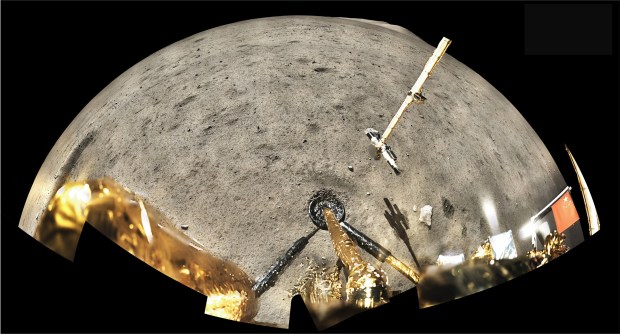
Credit: CNSA Lunar Exploration and Space Engineering Center
From a technological standpoint, China is already one of the world’s top space powers and is rapidly gaining expertise and racking up accomplishments. And while previous missions have focused on providing data to Chinese researchers, the nation is increasingly looking to forge international collaborations. Data and samples from these missions will be available to international researchers after a period of 12 months. Xuntian, a space telescope similar to Hubble but with 300 times the field of view, could launch as soon as 2024. This could provide a huge opportunity for scientists to collaborate.
However, cooperation with the U.S. at a governmental level looks as though it will be severely restricted by geopolitical tensions. Some argue that scientific collaboration can help defuse tensions between rival superpowers, as was sometimes the case with the U.S. and Soviet Union. But there are also legal obstacles to collaboration, including the so-called Wolf Amendment, a 2011 law that puts up high barriers to NASA engaging with Chinese entities.
What is clear is that China continues to grow its capabilities and has set out a road map to comprehensively explore the solar system across lunar, planetary, and deep-space missions. These in turn are strengthening and inspiring China’s scientific community, and will bring new value, science, and impetus to astronomy and space exploration.
Investing in science
The Tianwen deep-space and Chang’e lunar projects are China’s national-level, flagship missions. These will require — and demonstrate — serious ambition and resources. But there is another player in China with its own plans to further knowledge of the solar system and the universe: the Chinese Academy of Sciences (CAS), a sprawling network of national institutes researching topics that include astronomy, planetary sciences, physics, and more.
CAS kickstarted China’s engagement in space science with a cluster of missions attuned to target key science questions. These included Wukong, also known as the Dark Matter Particle Explorer (DAMPE), which looked for signs of weakly interacting particles theorized to be dark matter. China also launched its first X-ray observatory, the Hard X-ray Modulation Telescope. And the Quantum Experiments at Space Scale (QUESS) spacecraft conducted pioneering experiments in quantum encryption and teleportation. QUESS was the first craft to generate entangled photons in space, which could be used to produce virtually unbreakable encryption keys for secure communications. All three launched across 2015–2017 as part of what China calls a Strategic Priority Program (SPP) on space science.
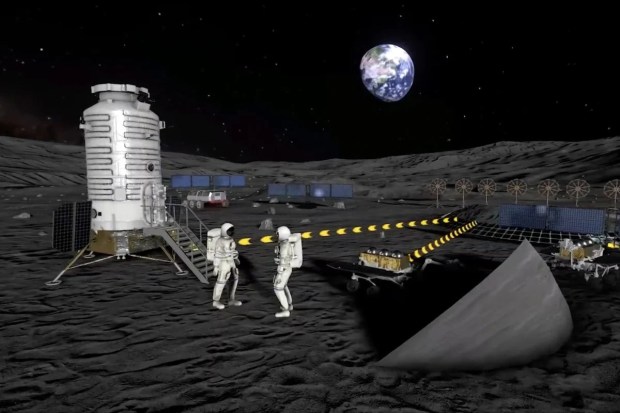
Credit: CNSA
The second round of SPP missions are now launching. The Gravitational Wave High-energy Electromagnetic Counterpart All-sky Monitor (GECAM) launched in 2020 as a pair of microsatellites, seeking X-ray and gamma-ray counterparts to gravitational-wave events; however, only one of the two GECAM craft is currently operational. And the Advanced space-based Solar Observatory (ASO-S) went up in 2022 to investigate the relationship between the Sun’s magnetic field, solar flares, and coronal mass ejections.
Next, the Einstein Probe, which aims to launch in early 2024, will scan the sky for X-rays emitted from the most violent events in the universe, like stars being torn apart by supermassive black holes. The Solar wind Magnetosphere Ionosphere Link Explorer (SMILE), a space weather collaboration with the European Space Agency, will follow around 2025.
The third SPP round, currently undergoing a selection process, has been broadened to include potential deep-space exploration and exoplanet-hunting missions. One of two exoplanet proposals — the Closeby Habitable Exoplanet Survey (CHES) and Earth 2.0 (ET) missions — is likely to be selected. CHES (shown at left in an artist’s concept) aims to search for exoplanets with the astrometric method, making precise measurements of the positions and movements of 100 Sun-like stars within 33 light-years of Earth to see if any unseen planets are tugging on them. ET will use the transit method to search for Earth-size exoplanets with similar orbits around Sun-like stars. These would supplement a flagship mission named Miyin, which envisions a system of five formation-flying telescopes out at the Earth-Sun Lagrange 2 point, the same locale as the James Webb Space Telescope, to use the principle of interferometry to directly image exoplanets.
Other SPP III mission concepts include a low-cost sample-return mission to the near-Earth asteroid 1989 ML, which would help fill a gap in our understanding of the asteroid population by delivering the first samples of an E-type, iron-poor asteroid. And the Venus Volcano Imaging and Climate Explorer (VOICE) would potentially join a burgeoning international fleet of craft inspired by the resurgence of interest in our twin inferior planet. In total, around six or seven missions from 13 proposals under the SPP III program will be selected to fly.
Future concepts include a follow-on to DAMPE to detect signals of dark matter and a mission to Ceres to investigate the dwarf planet’s origins, underground ocean, and geological activity. Again, budgetary constraints and economic conditions, as well as continued progress and economic stability, will determine what can be achieved in these arenas.

